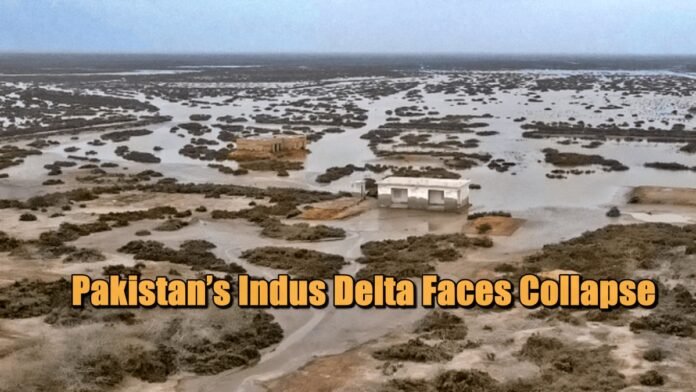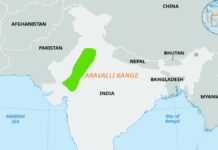
Key Points:
- More than 1.2 million people have fled the Indus Delta in southern Sindh, Pakistan, as seawater intrusion destroys villages and livelihoods.
- Over 40 villages once hubs of fishing and farming are now deserted; Kharo Chan’s population dropped from 26,000 (1981) to 11,000 (2023).
- Dams, irrigation, and climate change have reduced the Indus River’s flow by 80% since the 1950s, letting saltwater flood fertile land and wipe out crops and fisheries.
- Rising salinity has increased by 70% since 1990, rendering vast tracts barren and forcing families into climate migration.
- India’s 2025 suspension of the Indus Waters Treaty after the Pahalgam attack has further squeezed water supplies, raising political and environmental alarms.
Islamabad: A humanitarian and ecological catastrophe is unfolding in Pakistan’s Indus Delta, where entire communities are fleeing their ancestral lands in southern Sindh. What was once a prosperous civilization, rooted in farming and fishing near the mouth of the Indus River, is now a wasteland of salt-encrusted soil, abandoned homes, and vanishing villages.
Saltwater Swallows Homes, Farming, and Heritage
“The saline water has surrounded us from all four sides,” laments Habibullah Khatti, one of thousands forced to leave his village of Mirbahar, Kharo Chan, about 15 km from where the Indus meets the Arabian Sea. Now, the ground where his mother’s grave lies is covered with white salt crusts symbolic of the transformation from fertile land to desert.
- Kharo Chan, once home to 40 vibrant villages, is nearly swallowed by the sea; only a handful of households remain, with eerie silence replacing the bustle of daily life.
- The population decline is staggering, echoing across the delta as hundreds of thousands seek new lives in Karachi or further inland.
The Numbers: Water Loss and Human Exodus
- Over 1.2 million people have migrated from the Indus Delta since 2005, driven by seawater intrusion, river depletion, and loss of livelihoods.
- The drop started decades ago but has escalated in recent years as water flow into the delta is now 80% lower than in the 1950s.
- Salinity levels have soared by 70% since 1990, devastating both agriculture and marine life especially shrimp and crabs.
- Kharo Chan’s population plummeted from 26,000 in 1981 to 11,000 in 2023.
What Caused the Collapse?
- Dams, Irrigation & Hydropower: Extensive upstream construction in Pakistan and India has diverted the Indus River’s natural flow, starving the delta of fresh water and essential silt.
- Climate Change: Glacial melt patterns and sea level rise have worsened the crisis, as heavier, saltier tides move farther inland each year.
- Treaty Suspension: In April 2025, India suspended the Indus Waters Treaty a move following the Pahalgam attack further straining Pakistan’s water access and deepening fears over the region’s future.
Loss of Livelihoods and Ecological Destruction
- With cropland ruined and fish stocks depleted, thousands of families have lost their means to survive.
- Women, historically engaged in net-making and fish packing, now struggle for work in Karachi’s crowded urban outskirts.
- Massive loss of mangrove forests a key buffer against saltwater continues, magnifying environmental fragility despite restoration projects.
Government and Community Response
- The Pakistani and Sindh governments, with UN support, have launched the “Living Indus Initiative” and mangrove restoration drives, but progress is too slow to reverse the exodus for most families.
- Climate activists warn of a continuing tragedy: a civilization vanishing not just from environmental neglect, but from systemic mismanagement and geopolitical conflict.
The Tragedy in Numbers
| Statistic | Figure |
|---|---|
| People displaced (last 20 yrs) | 1,200,000+ |
| Villages lost in Kharo Chan | 40+ |
| Reduction in river flow | 80% since 1950s |
| Salinity increase | 70% since 1990 |
| Mangrove cover loss | >90% reduction in active delta since 1883 |
The fate of the Indus Delta is a test for both local stewardship and international cooperation. Unless bold action is taken, the region’s unique way of life will be lost to history, and the human cost of climate and political inaction will continue to soar.

















































